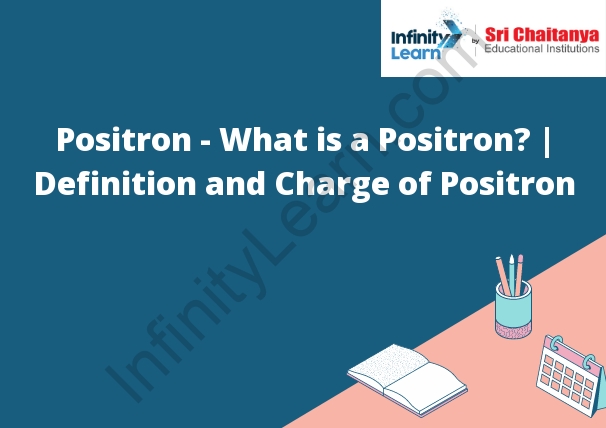Table of Contents
Positron
Positron emission tomography (PET) is a medical imaging technique that uses positrons to create images of the body. A PET scanner consists of an array of detectors that surround the patient, and also a set of rings that rotate around the patient to create a 3D image. The detectors measure the energy and location of positrons that are released from the patient’s body. The images are used to diagnose and monitor diseases such as cancer, heart disease, and Alzheimer’s disease.

What is an Electron?
An electron is a negatively charged subatomic particle that is found in the atoms of all elements. Electrons orbit the nucleus of an atom in shells. Therefore the number of electrons in an atom’s outermost shell determines the atom’s chemical properties.
Electron Spin Resonance
- Electron spin resonance (ESR) a phenomenon in which electron spins in a magnetic field are perturbed by the presence of an external magnetic field. Therefore the external magnetic field is typically created by a superconducting magnet. ESR used in many fields, including physics, chemistry, and biology.
- The electron has a magnetic moment, which a measure of the strength of its magnetic field. When the electron placed in a magnetic field, its magnetic moment will align with the field. If the electron in a static magnetic field, its magnetic moment will remain aligned with the field. However, if the electron placed in a rotating magnetic field, its magnetic moment will precess (rotate) around the field.
- ESR used to study the precession of the electron’s magnetic moment. When the electron’s magnetic moment is perturbed by the presence of an external magnetic field, it will emit radiation. This radiation can detected and used to study the electron’s magnetic moment.
Neutron
- stars incredibly dense objects made up almost entirely of neutrons. A teaspoon of neutron star material would weigh a billion tonnes.
- A neutron star created when a supernova explosion ejects the outer layers of a star, leaving behind the core made of neutrons. These incredibly dense objects are incredibly fascinating to scientists because they offer a unique opportunity to study the properties of neutrons in a way that is not possible on Earth.
Nucleon anomalous magnetic moment
- The nucleon anomalous magnetic moment is the deviation of the nucleon’s magnetic moment from the prediction of the Standard Model. It measured in units of the nuclear magneton.
- The Standard Model of particle physics predicts that the nucleon’s magnetic moment is 2.792847 nuclear magnetons. However, experiments have found that the nucleon’s magnetic moment is 2.792852 nuclear magnetons. This difference known as the nucleon anomalous magnetic moment.
- The nucleon anomalous magnetic moment one of the most precisely measured quantities in particle physics. Therefore the current best measurement of the nucleon anomalous magnetic moment is 2.792852 nuclear magnetons.
Protons
Protons positively charged particles that found in the nucleus of an atom.
Neutrons
Neutrons uncharged particles that found in the nucleus of an atom.
Electrons
Electrons negatively charged particles that orbit the nucleus of an atom.
Difference between Electron and Positron:
The electron and positron are both subatomic particles, but they have some important differences. The electron negatively charged, while the positron positively charged. Electron has a mass of 9.11 × 10-31 kg, while the positron has a mass of 1.02 × 10-27 kg. The electron has a radius of 2.8 × 10-15 m, while the positron has a radius of 5.2 × 10-15 m. Finally, the electron has a lifetime of about 10-22 seconds, while the positron has a lifetime of about 10-8 seconds.
What Positron Made Up of?
A positron is an elementary particle that has the same mass as an electron, but the opposite electric charge.
Positron and Electron Collide:
A positron and an electron collide, producing two gamma rays.
Beta Plus Decay:
- Alpha decay is a type of radioactive decay in which an atomic nucleus emits an alpha particle.
- An alpha particle is a helium nucleus consisting of two protons and also two neutrons.
- The result of alpha decay is the formation of a new, more stable nucleus.
- The energy released in the process used to expel the alpha particle from the nucleus.
Symbol of Positron:
The symbol of positron is an arrow pointing up with an “o” in the center.
How does Positron Emission Mammography Work?
Positron emission mammography (PEM) is a type of mammography that uses a radioactive tracer to help detect breast cancer. A small amount of radioactive tracer injected into a vein in your arm. The tracer travels through your body to the tumors in your breast. When the tracer reaches the tumors, it emits a positron. This positron interacts with an electron in the tumor, causing the tumor to give off a small amount of energy. This energy detected by the PEM machine, which creates an image of the tumor.
What Elements Undergo Positron Decay?
The three primary elements that undergo positron decay are carbon, nitrogen, and oxygen.
Natural Production of Positron:
When an atom of oxygen-16 (O-16) absorbs a positron, the atom converted into oxygen-17 (O-17). The atom of oxygen-17 is unstable and quickly splits into two atoms of oxygen-8 (O-8) and a photon of energy. The atom of oxygen-8 is stable and does not decay.
β Beta Decay Weak Forces:
The weak interaction is responsible for the radioactive decay of subatomic particles. In beta decay, a neutron in an atom’s nucleus decays into a proton and an electron. The weak interaction is also responsible for the nuclear fusion that powers the sun and other stars.









